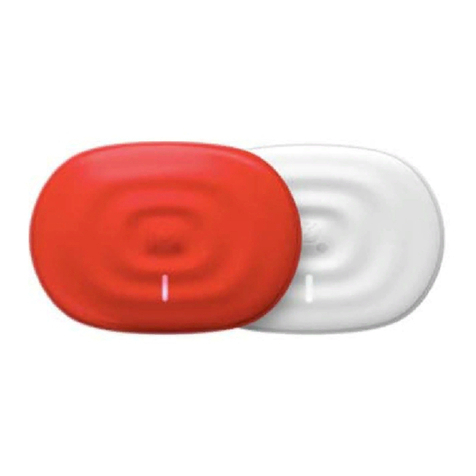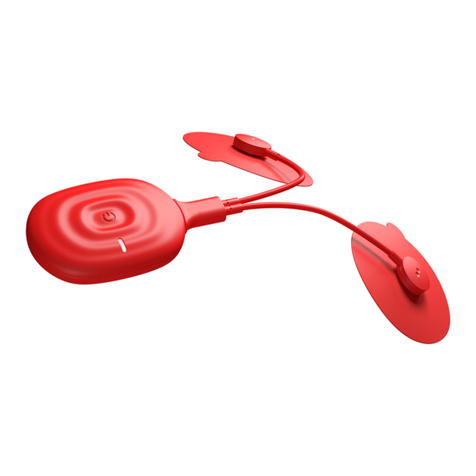5
Do not use PowerDot PD-02 if patient is connected to a high-frequency surgical instrument as this could cause skin
irritations or burns under the electrodes.
Do not use PowerDot PD-02 in the close proximity of medical devices such as MRI, CT, diathermy, X-Ray as well as
RFID equipment (e.g. electromagnetic security systems) as those could alter the current generated by PowerDot PD-02,
cause tissue damage, and can result in severe injury or death. If you have any doubts when using PowerDot PD-02
device in close proximity to another medical device, please contact the device manufacturer.
Do not use the PowerDot PD-02 within 3 feet of short wave or microwave devices as this could alter the currents
generated by the stimulator. If you are in any doubt as to the use of the stimulator in close proximity to another medical
device, seek advice from the manufacturer.
Do not apply stimulation with PowerDot PD-02 near the area of an implant, such as cochlear implants, pacemakers,
skeletal anchorage or electric implants. This could cause an electrical shock, burns, electrical interference or death.
Do not apply stimulation with PowerDot PD-02 close to metal. Remove jewelry, piercings, belt buckles or any other
metallic product or device in the area of stimulation.
•Disconnect the electrode pads from the device before using electrosurgical equipment, or a defibrillator, to avoid
cutaneous burns from the electrodes and destroying the device.
•Apply caution when using PowerDot PD-02 near electronic surveillance equipment (e.g. cardiac monitors, ECG
alarms), as there is a risk they may not work properly whilst the electrical stimulation device is being used.
•Do not use PowerDot PD-02 in areas in which unprotected devices are used to emit electromagnetic radiation. Portable
communications equipment can interfere with the device.
7. Electrode Pads Placements Safety
NEVER attach electrodes:
•Transcerebrally, or on the eyes
•On the front and sides of the patient’s neck or mouth because this could cause severe muscle spasms resulting in closure
of your airway, difficulty in breathing, or adverse effects on heart rhythm or blood pressure
•Stimulation should not be applied over the carotid sinus nerve particularly in patients with a known sensitivity to the
carotid sinus reflex.
•Counter-laterally, i.e. one stimulator should not be applied on opposite sides of the body.
•Transthoratically, to the patient’s front torso (i.e. chest or abs) and back torso (i.e. upper back, lower back)
simultaneously. Introduction of electrical current into the heart may cause cardiac arrhythmia.
•Over open wounds or rashes, or over swollen, red, infected, or inflamed areas or skin eruptions (e.g., phlebitis,
thrombophlebitis, varicose veins)
•Over, or in proximity to, cancerous lesions
8. General Electrode Pads Safety Measures
Always use electrode pads supplied by the manufacturer. Other electrodes may have electrical properties that are
unsuitable for or may cause damage.
For best results, wash and clean the skin of any oil and dry it before attaching the electrode pads.





























